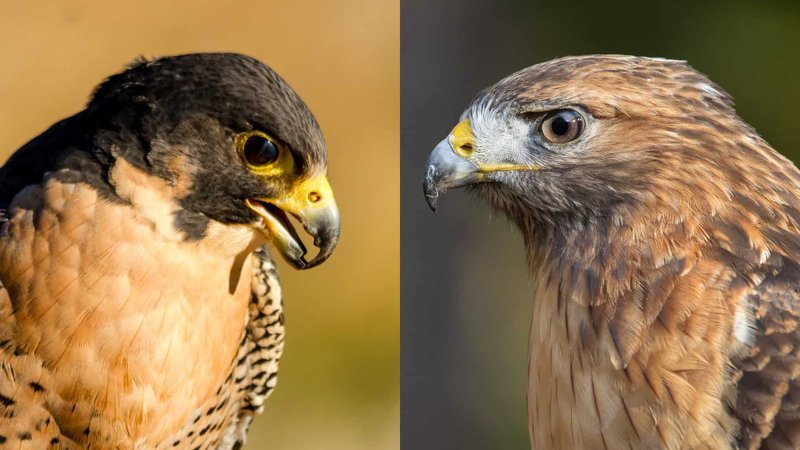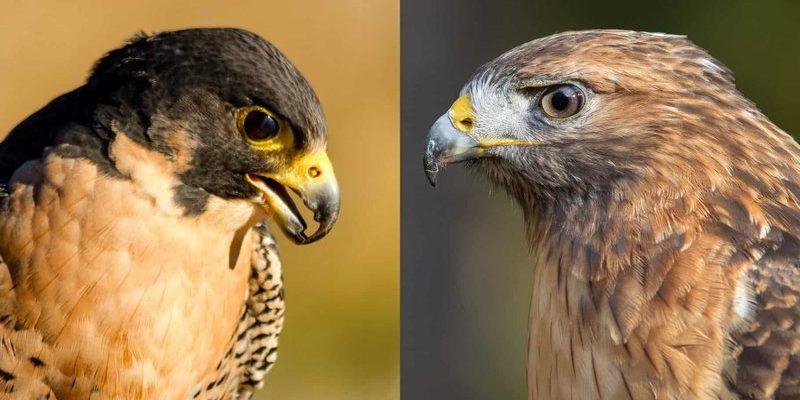
In this article, we’ll dive into the fascinating world of hawks and their look-alikes, exploring differences in appearance, behavior, hunting techniques, and more. Think of it as taking a birdwatching trip with a friendly guide. Whether you’re an aspiring ornithologist or just someone curious about nature, you’ll find plenty of useful information here.
Hawk Characteristics: What Makes Them Unique?
Hawks belong to the family Accipitridae, which includes various species known for their powerful builds and exceptional flying abilities. You might be wondering, what exactly makes hawks so distinctive? For starters, their sharp vision is legendary. Hawks can spot prey from miles away, thanks to their specially adapted eyes that allow them to see a broader spectrum of colors compared to humans. This gives them an advantage when searching for food.
Additionally, hawks are usually medium to large-sized birds, with a wingspan ranging from about 3 to 5 feet, depending on the species. Their feathers can vary greatly in color and pattern, but many feature a mix of brown, white, and black that helps them blend into their surroundings. This camouflage is essential for both hunting and avoiding predators.
Hawks also boast strong, curved beaks designed for tearing flesh, along with sharp talons that help them catch and hold onto their prey. All these traits contribute to their reputation as skilled hunters in various habitats.
Comparing Hawks and Eagles: A Feathered Duel
Hawks and eagles are often mistaken for each other, but there are essential differences. Generally, eagles are larger and more powerful. While hawks have a more varied diet, eagles primarily focus on fish. This is a big deal, especially in areas near water bodies where eagles are often found diving to catch their slippery meals.
You might have noticed that eagles tend to have a more impressive wingspan, often exceeding 7 feet, particularly in species like the Bald Eagle. Their soaring flight patterns are also more graceful; they can glide effortlessly on thermal winds, making them appear almost majestic in the sky.
On the other hand, hawks are more versatile in their hunting methods. They can often be seen hunting in different environments, from open fields to dense forests. This adaptability makes them quite successful in various ecosystems compared to their eagle cousins.
Hawks vs. Kites: The Subtle Differences
Kites are another group that often overlaps with hawks in terms of habitat and size. However, the main difference lies in their hunting style and physical traits. Kites tend to have longer, narrower wings and a forked tail, giving them a more agile flight. Their method of hunting often involves gliding and hovering while scanning for prey below, whereas hawks are more likely to swoop down quickly to catch their target.
Another fun fact: kites often primarily feed on insects and small rodents, which sets them apart in terms of diet compared to hawks that might go after larger prey. So, if you see a bird soaring with a distinctly pointed tail, there’s a good chance it’s a kite rather than a hawk.
Falcons vs. Hawks: Speed and Style
Falcons are another group of birds that bear resemblance to hawks but differ significantly in many aspects. One of the most notable distinctions is speed. Falcons, especially the Peregrine Falcon, are known for their incredible diving speeds, which can reach over 200 mph. In contrast, hawks are more about consistent, powerful flights rather than sheer speed.
In terms of appearance, falcons have a more streamlined body and pointed wings, making them built for speed. Their beaks are also more adapted to catch swift-moving prey, like small birds. Hawks, on the other hand, usually have a bulkier build, suited for capturing larger prey through ambush tactics rather than high-speed pursuits.
You might also notice that falcons have a unique facial pattern featuring a “mustache” stripe—this helps reduce glare from the sun while they’re flying high and hunting. It’s like nature’s own pair of sunglasses!
Identifying Hawks: Key Features to Look For
When trying to identify a hawk, there are a few key features you can focus on. First, look at their size—most hawks are medium to large birds. Then, pay attention to the tail feathers. Unlike other birds, hawks generally have tail feathers that are broad and can vary in length based on the species.
Color can also aid identification. For instance, Red-tailed Hawks are known for their signature red tail, especially when they’re soaring in the sky. If you spot a hawk with a brownish body and a white belly, you might be looking at a Cooper’s Hawk, which also has a distinctive rounded tail.
Lastly, don’t forget to listen! Hawks have a unique, sharp call that can help distinguish them from other birds nearby. This vocal cue is a handy indicator, especially when you’re trying to spot one among the trees.
Behavioral Differences: Hunting and Nesting
Behaviorally, hawks exhibit various traits that set them apart from similar species. For instance, their hunting technique often involves perches. Hawks prefer to sit on high vantage points like trees or poles from which they can survey their surroundings. Once they spot potential prey, they use their incredible speed and agility to dive in for the catch.
Nesting is another area where hawks can be quite unique. Most hawks build their nests high up in trees or on cliffs, using sticks and other materials to create a sturdy structure. This placement helps protect their young from ground predators.
In contrast, other birds of prey, like owls, often prefer more concealed roosts in dense vegetation. This difference in nesting habits is essential for understanding these birds’ behaviors and their adaptations to survival.
Understanding the differences between hawks and similar bird species is not just fascinating; it lets us appreciate the diversity of the avian world. Each bird—whether it’s a hawk, eagle, kite, or falcon—has unique traits that help it adapt to its environment and thrive in its niche.
So next time you’re out in nature and spot a bird of prey soaring above, take a moment to consider: is it a hawk or one of its cousins? By recognizing these differences, you deepen your connection to wildlife and enhance your birdwatching experience. It’s all part of the joy of being a curious observer of nature!

